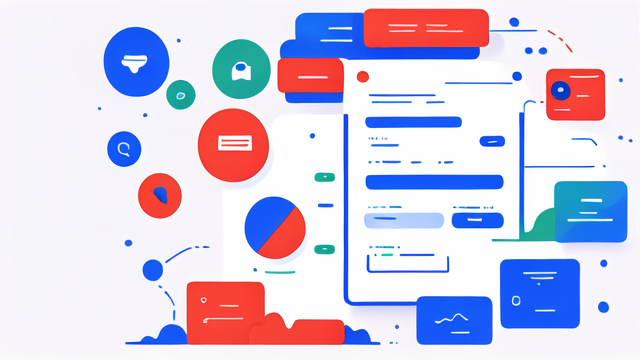Mastering the Google Helpful Content Update: Essential SEO Strategies
Understanding the Google Helpful Content Algorithm
What is the Google Helpful Content Algorithm?
The Google Helpful Content Algorithm is a change to Google’s search ranking system. It aims to reward content that helps users the most. This means sites with original, useful content will rank higher. Sites with less helpful or copied content may rank lower. It’s part of Google’s focus on user-centered search results. Content creators need to focus on quality to succeed with this update.

How Does the Algorithm Affect Content Creators?
The Google Helpful Content Algorithm impacts creators in several ways. It rewards those who make content with the user’s intent in mind. On the other hand, content that seems to prioritize search engines over people gets lower rankings. The update means creators need to focus more on quality and relevance. They must create helpful, informative, and engaging content for their audience. If they do not, they might see a drop in their search visibility. This change prompts a shift towards more user-focused content strategies.
Key Factors Influenced by the Algorithm
Google’s Helpful Content Algorithm focuses on several factors to rank pages. Key factors include user engagement, content depth, and relevance. Sites with original, insightful content rank better. Also, content must directly answer user questions. Sites with an excessive amount of ads may be penalized. It is crucial to write for humans, not search engines. Avoid duplicate content and follow SEO best practices. Regularly updated, fresh content is favored by the algorithm. A clear and purpose-focused page layout helps with rankings. Remember, the quality of outbound links matters too.
Crafting Content that Aligns with the Algorithm
Researching the User Intent Behind Queries
Understanding user intent is critical for SEO success. It’s about knowing why someone is searching. To align with Google’s algorithm, consider these steps:
- Identify the Types of User Intent: Users typically have informational, navigational, transactional, or commercial investigation intentions. Recognize what your target users intend to find.
- Use Keyword Research Tools: Tools like Google Keyword Planner can help in understanding the intent behind search terms. Look for patterns in search queries.
- Analyze Search Engine Results Pages (SERPs): Check what currently ranks for your keywords. High-ranking content can offer clues about the user’s intent.
Craft content that addresses the user intent specifically. Make it easy for users and the algorithm to see the value in your content.
Tailoring Your Content to Answer Questions and Address Needs
To craft content that aligns with Google’s algorithm, it is key to answer user queries. Your content must be rich and add real value to the reader. Here are simple steps to tailor your content correctly:
- Identify common questions in your niche using tools like Answer the Public.
- Make sure to answer these questions clearly in your articles.
- Use simple language to explain complex topics.
- Break down info into short, easy-to-digest points.
- Add examples to help users understand better.
By doing this, you help meet user needs and Google might rank your content higher.
Best Practices for Content Creation and Optimization
When creating content that aligns with Google’s Helpful Content Update, consider these practices:
- Focus on Depth and Originality: Write in-depth content that provides new insights, not just general info found everywhere.
- Prioritize User Experience: Make sure your content is readable and engaging. Use headings, bullet points, and images to break up text.
- Expertise and Authoritativeness: Show your knowledge. Include data, case studies, and expert quotes to build trust.
- Avoid Keyword Stuffing: Use keywords naturally. Don’t overload your content with them to try to trick the algorithm.
- Update Regularly: Keep content fresh by updating facts and figures. This shows Google that your content is current.
- Mobile-Friendly Format: Ensure your content is easy to read on mobile devices. More users are searching on-the-go.
- Include Multimedia: Use videos, infographics, and podcasts to enrich your content and cater to different learning styles.
These best practices can help your website align with Google’s algorithm and potentially improve your SEO ranking.
Monitoring and Adapting to the Algorithm’s Updates
Keeping Up With Google’s Upcoming Algorithm Updates
Staying current with Google’s algorithm updates is crucial for SEO success. Google often announces changes online. Keep an eye on their official blogs and forums. Subscribe to SEO news websites. These sites share Google’s changes and their impacts. Join a community of SEO professionals. They discuss and dissect every Google update. Use Google’s Search Console to get direct insights. It alerts you about possible site issues after updates. Make a habit of continuous learning and adapt quickly. That way, your content remains aligned with Google’s standards.
Tools for Tracking Content Performance
To stay ahead with SEO, use tools to track how content performs. Good tools help you see if you’re meeting goals. They show how users find and use your content.
Some top tools include:
- Google Analytics: This tracks visitor behavior on your site.
- SEMrush or Ahrefs: These offer insights into rankings and competitor data.
- Google Search Console: This shows your site’s presence in Google search results.
Each tool gives different data for you to use. Using them right can make your SEO strategy shine.
Adjusting Your SEO Strategy Based on Analytics Insights
With Google’s helpful content algorithm, staying agile in your SEO approach is key. Here’s how:
- Regularly check your website’s analytics to see how users engage with your content.
- Look for trends in traffic changes after Google updates its algorithm.
- Use tools like Google Analytics and Google Search Console for insights.
- Analyze metrics such as bounce rate, time on page, and click-through rate.
- Identify which pages lost rank and update them with better, more helpful content.
- Test new content formats or strategies to see what resonates with your audience.
By following these steps, you can help ensure your content stays relevant and valuable.